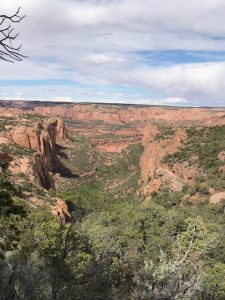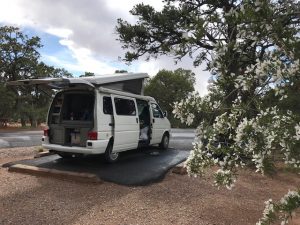My next stop is Desert View Campground in the east end of the Grand Canyon. This big daddy of all canyons always impresses whether walking the rim trails with panoramic views or venturing into the bowels – steep, dry, rugged trails – an epic and memorable hiking experience.
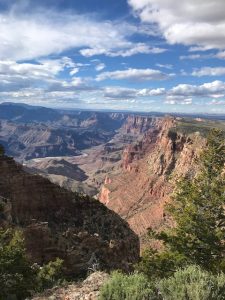
I had planned to spend two nights – hiking and cycling the canyon road, but the mass of overzealous tourists overwhelmed me. Unfortunately, the Grand Canyon has become one of the over-visited and crowded National Parks with tourists rushing to each overlook, jumping from their car and snapping a selfie with the giant crevice in the background. Even the elk in camp have adapted to all the people.
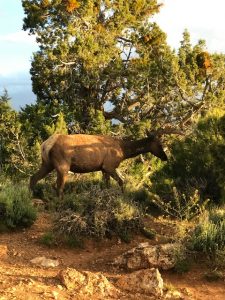
After a great rim hike I opted to move on to the more remote Navajo National Monument. Good choice. Lots of empty campsites, no electrical or water hookups and no big RV rigs.
Navajo National Monument is located about 25 miles from Kayenta and is the site of the Betatakin cliff dwellings. The only way to access the cliff dwellings is to take the 5 mile guided hike. My guide was a delightful local Navajo woman and park ranger who shared past and current traditions of the Navajo people as we traversed into Fir Canyon.
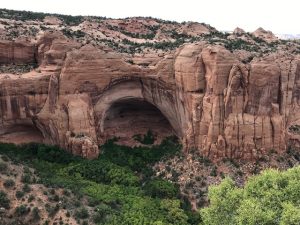
The prehistoric Anasazi Betatakin cliff dwellings originally contained 120 rooms. Approximately 80 remain intact today.
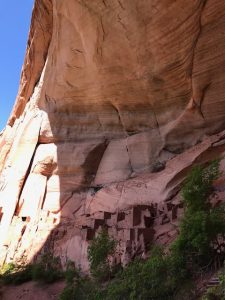
The trail is also the launch point for the 17mi RT backpack to the Keet Steel cliff dwellings, the second largest in the US behind Mesa Verde. I’ll definitely plan on this next year as I could have scored a permit due to cancelations.
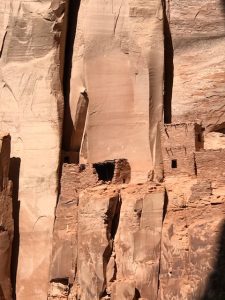
As we entered the deep, narrow canyon it was like traversing upward in vegetative zones. With less sunshine reaching the depths of the canyon there is less moisture evaporation, cooler temps and lush vegetation. Several Navajo families continue to farm the canyon bottom growing maize, beans and squash.
